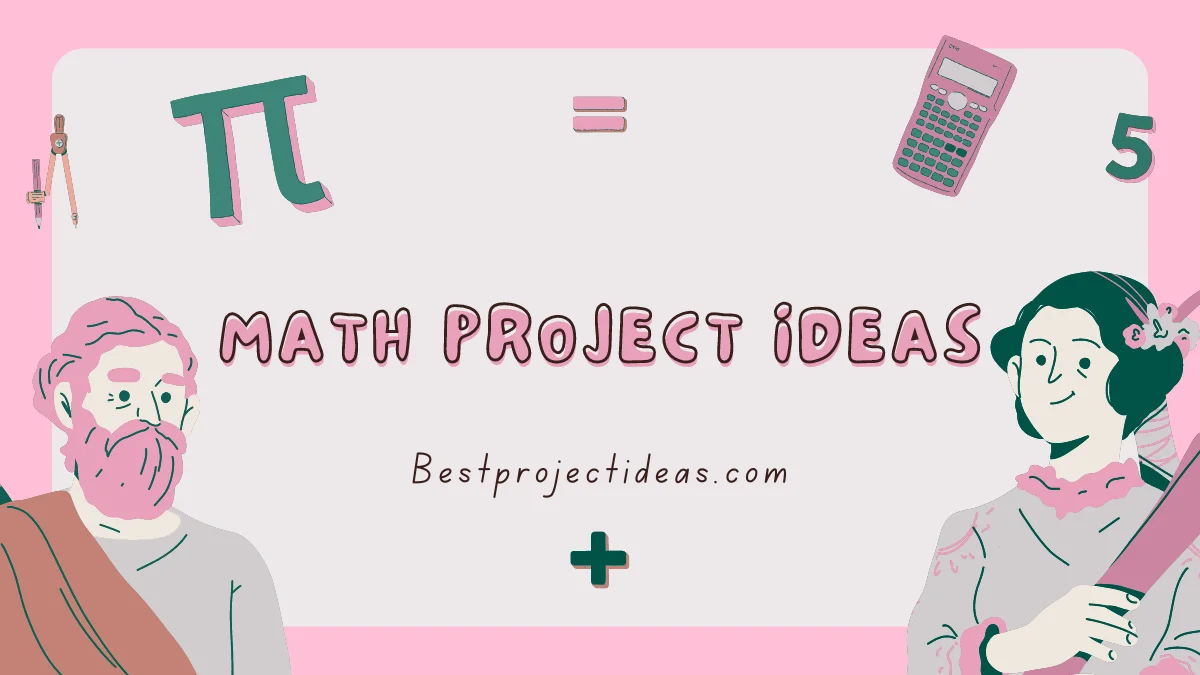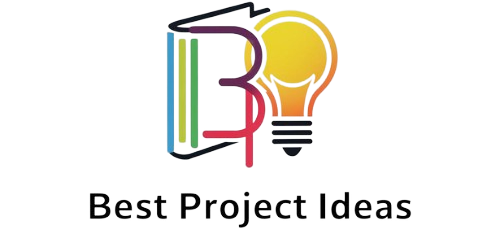
Math projects can be enjoyable and exciting! They let you explore numbers, shapes, and patterns in interesting ways. You can see how math is all around us with math projects, from nature to buildings to games.
These projects aren’t just about solving problems on paper—they let you be creative and hands-on.
You might build something, do an experiment, or even use math to make art. Math projects help you see how valuable and exciting math is.
They’re a great way to learn new things and show what you know.
Whether you like working alone or with friends, there’s a perfect math project for everyone. Get ready to dive into math and have some fun!
What Is Maths Project Work?
Math projects involve hands-on tasks where students use math ideas in real-life situations. These projects go beyond regular problem-solving, pushing students to think critically, analyze, and understand math concepts better.
Common types include data analysis, mathematical modelling, pattern studies, applied math, historical research, and combining math with other subjects.
Projects usually require students to gather data, research, experiment, and share results.
The goal is to build problem-solving skills, improve communication, and help students see how different areas of math connect.
Math projects make learning more engaging and hands-on, making abstract ideas more precise and more meaningful to students.
Must Read: 111+ Must Try Social Science Project Ideas For Students
How Can I Be Creative In Math Project?
Being creative in a math project can be both fun and intellectually stimulating. Here are some ideas:
- Visual Representations: Use tools like fractals, tessellations, or 3D modeling to create visuals of math ideas.
- Real-World Applications: Find unique math methods to solve everyday problems or explain natural events.
- Interdisciplinary Connections: Mix math with subjects like art, music, biology, or psychology to find interesting links.
- Historical Exploration: Research lesser-known mathematicians or breakthroughs and share their stories engagingly.
- Game Design: Make a math-based game or puzzle that teaches a specific concept.
- Data Analysis: Pick an interesting dataset and analyze it creatively to find surprising insights.
- Mathematical Art: Create art based on math ideas, like string art or origami.
- Technology Integration: Use programming or digital tools to explore math ideas interactively.
- Alternative Number Systems: Study and present non-standard number systems or base systems.
- Math in Nature: Explore and document math patterns found in nature, like the Fibonacci sequence in plants.
Math Project Ideas For High School Students
Checkout the best math project ideas for high school:
Algebra
- Solve real-world problems with linear equations.
- Explore quadratic functions in nature.
- Graph polynomial functions using technology.
- Investigate exponential growth in populations.
- Analyze statistical data with regression models.
- Create algebraic art using function graphs.
- Study matrices in computer graphics.
- Explore complex numbers in electrical engineering.
- Use systems of equations for budgeting.
- Investigate sequences and series in music.
Geometry
- Design efficient packaging using 3D shapes.
- Explore geometric patterns in architecture.
- Create optical illusions with geometric principles.
- Study angles and distances in sports.
- Investigate fractals in nature and art.
- Apply transformations to create tessellations.
- Use trigonometry to measure tall buildings.
- Explore non-Euclidean geometry in video games.
- Design gardens using geometric shapes.
- Study symmetry in molecular structures.
Trigonometry
- Measure heights using clinometers and trigonometry.
- Analyze sound waves with trigonometric functions.
- Explore periodic motion in amusement rides.
- Use trigonometry to navigate by stars.
- Study triangulation in GPS technology.
- Apply trigonometry to create sundials.
- Investigate harmonics in musical instruments.
- Analyze light refraction using trigonometry.
- Explore circular motion in planetary orbits.
- Use trigonometry in bridge design.
Calculus
- Optimize shapes for minimal surface area.
- Study rates of change in chemical reactions.
- Analyze velocity and acceleration in sports.
- Investigate volume optimization in product design.
- Explore population growth models using calculus.
- Study heat flow with differential equations.
- Analyze profit maximization in business.
- Investigate fluid dynamics in blood flow.
- Explore optimal paths in roller coaster design.
- Study electrical circuits with calculus.
Statistics
- Analyze social media trends with statistics.
- Investigate climate change data patterns.
- Explore game strategies using probability theory.
- Study election polling and margin error.
- Analyze sports performance using statistical tools.
- Investigate consumer behavior through data analysis.
- Explore correlation in health and lifestyle.
- Study traffic patterns using statistical models.
- Analyze the effectiveness of advertising campaigns.
- Investigate stock market trends with statistics.
Number Theory
- Explore prime numbers in cryptography.
- Investigate perfect numbers and their properties.
- Study modular arithmetic in computer science.
- Analyze patterns in Pascal’s triangle.
- Explore Fibonacci numbers in nature.
- Investigate divisibility rules and their proofs.
- Study Diophantine equations in problem-solving.
- Explore unique factorization in ring theory.
- Analyze continued fractions in music theory.
- Investigate Goldbach’s conjecture and prime pairs.
Mathematical Modeling
- Model the spread of infectious diseases.
- Predict weather patterns using mathematics.
- Analyze traffic flow with mathematical models.
- Study ecosystem dynamics through mathematical equations.
- Model economic growth and market behavior.
- Investigate crowd behavior with mathematical simulations.
- Explore renewable energy efficiency using models.
- Analyze social network growth using mathematics.
- Study urban planning through mathematical modeling.
- Investigate flight paths with mathematical equations.
Applied Mathematics
- Optimize school bus routes with algorithms.
- Analyze sound quality in concert halls.
- Study voting systems and fairness.
- Investigate cryptography in digital security.
- Explore game theory in decision-making.
- Analyze the efficiency of solar panel designs.
- Study biomechanics in sports performance.
- Investigate mathematical patterns in nature.
- Explore algorithms in computer animation.
- Analyze data compression in file storage.
Financial Mathematics
- Study compound interest in long-term savings.
- Analyze mortgage payments and interest rates.
- Explore investment strategies using mathematics.
- Investigate insurance risk assessment models.
- Study options pricing in financial markets.
- Analyze credit scoring systems mathematically.
- Explore retirement planning with mathematical models.
- Investigate currency exchange rate patterns.
- Study tax brackets and progressive taxation.
- Analyze cost-benefit ratios in business decisions.
Discrete Mathematics
- Explore graph theory in social networks.
- Study combinatorics in puzzle solving.
- Investigate logic circuits in computer design.
- Analyze scheduling problems with algorithms.
- Explore set theory in database design.
- Study number bases in computer systems.
- Investigate recurrence relations in algorithms.
- Analyze Boolean algebra in digital logic.
- Explore game strategies with decision trees.
- Study error-correcting codes in data transmission.
Mathematical Physics
- Analyze projectile motion in sports.
- Study wave patterns in musical instruments.
- Investigate the center of mass in structures.
- Explore fluid dynamics in airplane design.
- Analyze energy conservation in roller coasters.
- Study electromagnetic fields with vector calculus.
- Investigate quantum mechanics through probability theory.
- Explore special relativity with Lorentz transformations.
- Analyze planetary motion with differential equations.
- Study thermodynamics in engine efficiency.
Operations Research
- Optimize inventory management in businesses.
- Analyze queueing theory in service industries.
- Study network flow in transportation systems.
- Investigate resource allocation in project management.
- Explore linear programming in production planning.
- Analyze decision theory in risk management.
- Study game theory in competitive markets.
- Investigate simulation models in healthcare systems.
- Explore Markov chains in weather prediction.
- Analyze dynamic programming in resource management.
Mathematical Biology
- Model population dynamics in ecosystems.
- Analyze genetic inheritance patterns mathematically.
- Study enzyme kinetics with differential equations.
- Investigate neural networks in brain function.
- Explore epidemiology models for disease spread.
- Analyze predator-prey relationships with equations.
- Study growth patterns in plants mathematically.
- Investigate cellular automata in biological systems.
- Explore evolutionary algorithms in genetic research.
- Analyze biochemical pathways with mathematical models.
Computational Mathematics
- Study numerical methods for solving equations.
- Analyze algorithms for machine learning applications.
- Investigate parallel computing in problem-solving.
- Explore Monte Carlo simulations in physics.
- Study finite element analysis in engineering.
- Analyze optimization techniques in computer science.
- Investigate computational geometry in computer graphics.
- Explore artificial neural networks in AI.
- Study cryptographic algorithms in cybersecurity.
- Analyze big data with statistical computing.
Mathematical Logic
- Explore propositional logic in argument analysis.
- Study proof techniques in mathematical reasoning.
- Investigate axiomatic systems in foundations.
- Analyze formal languages in computer science.
- Explore modal logic in philosophy.
- Study fuzzy logic in control systems.
- Investigate temporal logic in program verification.
- Explore set theory in mathematical foundations.
- Analyze model theory in abstract algebra.
- Study computability theory in theoretical computer science.
History of Mathematics
- Explore ancient number systems and calculations.
- Study famous unsolved problems in mathematics.
- Investigate the development of calculus through history.
- Analyze contributions of women in mathematics.
- Explore mathematical discoveries in different cultures.
- Study the evolution of geometry over time.
- Investigate the history of prime number theory.
- Explore the development of probability and statistics.
- Analyze historical methods of mathematical proof.
- Study the impact of computers on mathematics.
Mathematical Art and Design
- Create fractals using iterative processes.
- Explore symmetry in Islamic tile patterns.
- Study the golden ratio in art composition.
- Investigate mathematical principles in origami.
- Explore perspective drawing using projective geometry.
- Analyze color theory with mathematical models.
- Study topology in sculpture design.
- Investigate Fibonacci spirals in nature.
- Explore knot theory in Celtic designs.
- Analyze mathematical patterns in textile design.
Mathematical Puzzles and Games
- Explore strategy in Sudoku puzzles.
- Study probability in card games.
- Investigate mathematical principles in chess.
- Analyze optimal strategies using game theory.
- Explore topology puzzles and their solutions.
- Study logic in detective-style math problems.
- Investigate number theory in magic squares.
- Explore geometry in tangram puzzles.
- Analyze probability in dice games.
- Study combinatorics in board game design.
Mathematics in Technology
- Explore algorithms in search engine design.
- Study error correction in digital communication.
- Investigate encryption methods in cybersecurity.
- Analyze compression techniques in data storage.
- Explore mathematical models in computer vision.
- Study numerical methods in weather prediction.
- Investigate graph theory in network design.
- Explore the mathematical basis of machine learning.
- Analyze queuing theory in computer networks.
- Study optimization in robotics and automation.
Mathematics in Social Sciences
- Explore game theory in economic behavior.
- Study statistical analysis in psychology research.
- Investigate social network analysis using graphs.
- Analyze voting systems with mathematical models.
- Explore mathematical modeling in urban planning.
- Study population dynamics in demographic research.
- Investigate decision theory in policymaking.
- Explore mathematical economics in market analysis.
- Analyze linguistic patterns with statistical methods.
- Study mathematical sociology in group behavior.
Interdisciplinary Mathematics
- Explore math in music composition.
- Study mathematical patterns in literature.
- Investigate geometry in dance choreography.
- Analyze fractals in geological formations.
- Explore symmetry in molecular biology.
- Study topology in protein folding.
- Investigate math in climate change models.
- Explore graph theory in neuroscience.
- Analyze mathematical modeling in forensic science.
- Study statistics in public health research.
Advanced Mathematics
- Explore algebraic topology in shape analysis.
- Study differential geometry in general relativity.
- Investigate algebraic geometry in cryptography.
- Analyze complex analysis in fluid dynamics.
- Explore functional analysis in quantum mechanics.
- Study homological algebra in topology.
- Investigate stochastic processes in finance.
- Explore algebraic structures in coding theory.
- Analyze mathematical logic in automated reasoning.
- Study nonlinear dynamics in chaotic systems.
Mathematics in Everyday Life
- Explore budgeting using linear equations.
- Study geometric design in home improvement.
- Investigate probability in decision-making.
- Analyze statistical patterns in daily routines.
- Explore optimization in meal planning.
- Study time management using mathematical models.
- Investigate mathematics in cooking measurements.
- Explore the math behind personal fitness tracking.
- Analyze travel planning with optimization.
- Study household energy usage with mathematical models.
Also Read: 199+ New Scientific Method Project Ideas For Students
Summary
Math projects make numbers and shapes exciting. You can explore math in nature, games, and everyday objects. These hands-on activities let you count, measure, and create patterns using real things.
You might build models, do experiments, or even make art with math. Working on math projects helps you understand why math is important and how it’s used worldwide. You can do these projects alone or with friends.
Math projects are fun for learning new skills and showing what you know.
They help you see math differently—not just as problems on paper but as a tool for discovery and creativity. Get ready to have fun with numbers and see math in a whole new way!

